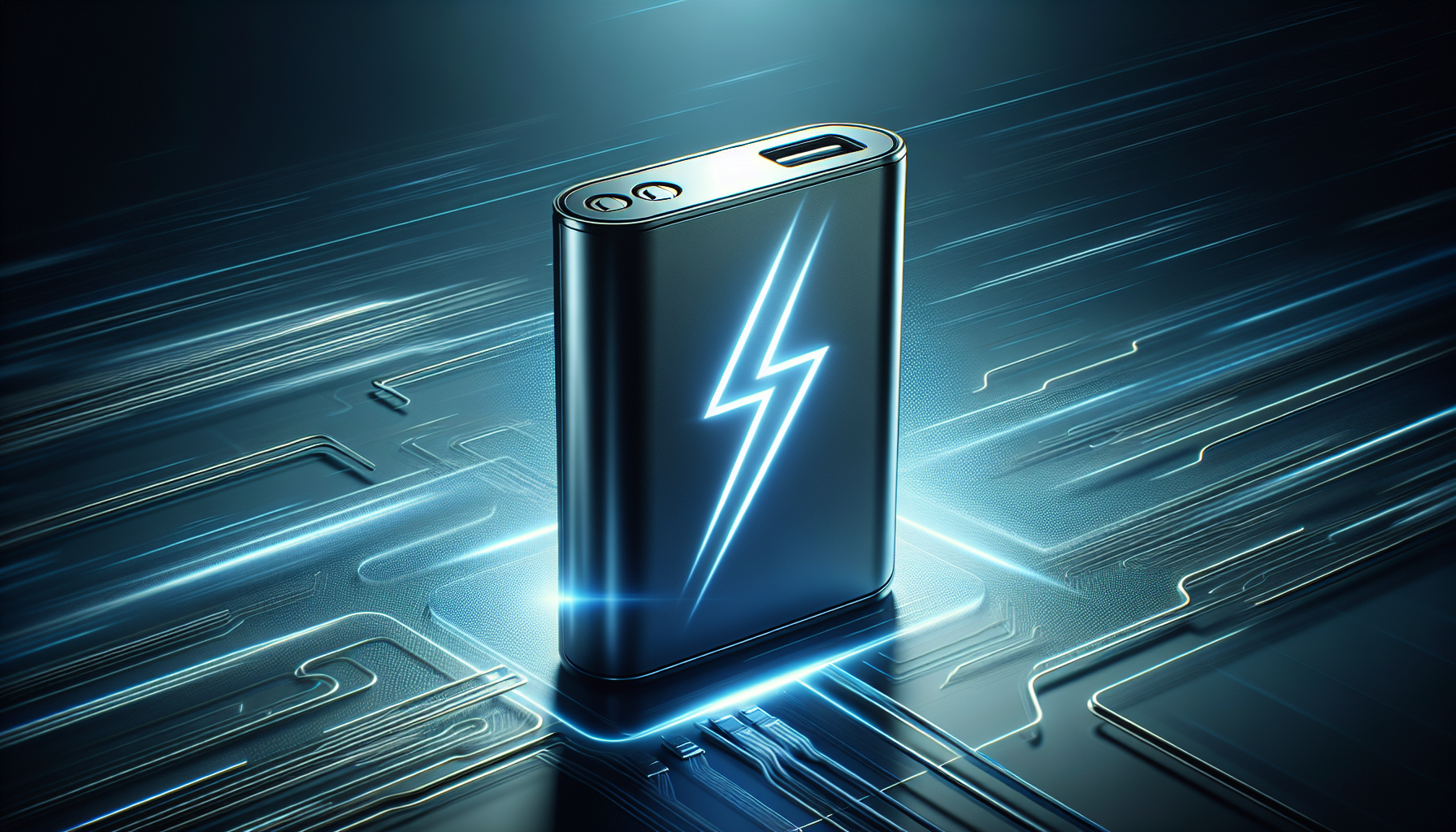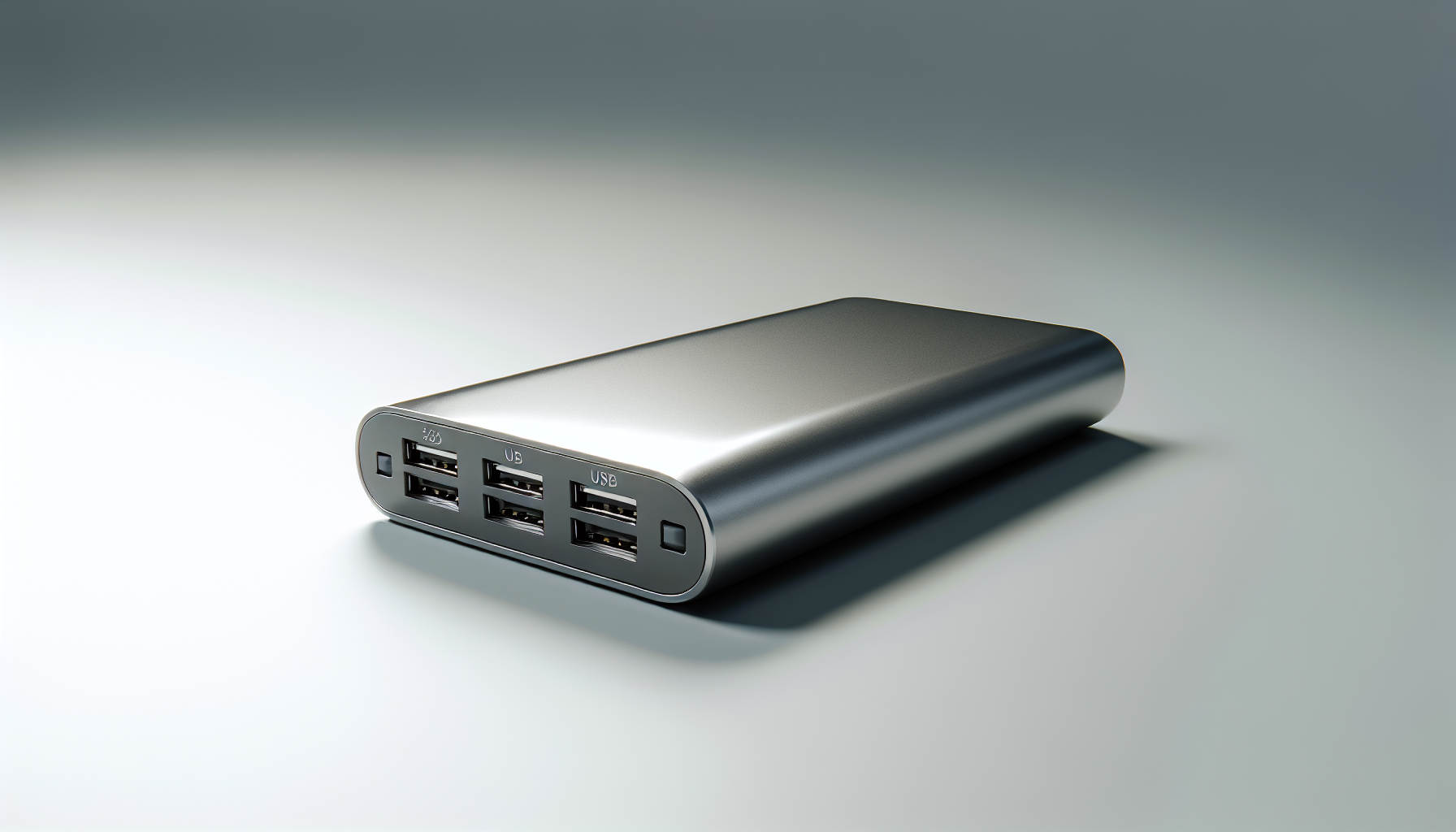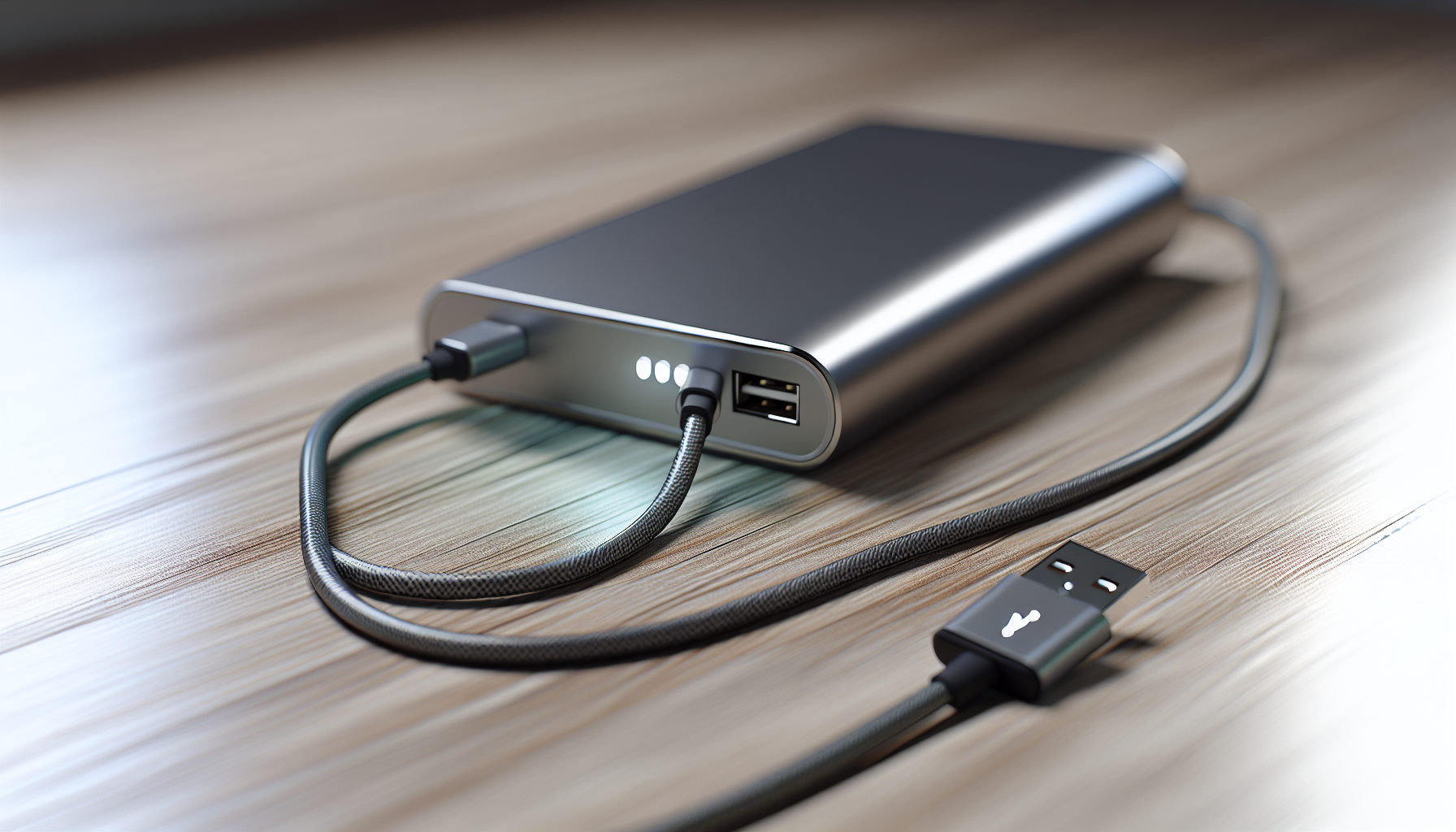Looking for a 20 000mAh power bank to keep your phone, tablet, or other USB devices charged on the go? With the capacity to charge a standard smartphone up to five times, these powerhouses stand ready to extend your device’s battery life. This article dives into the defining features, compatibility and efficient charging of a 20 000mAh power bank, ensuring you wield the power to stay connected, no matter where life takes you.
Key Takeaways
- A 20,000mAh power bank is a substantial energy reserve capable of charging devices like an iPhone 14 up to five times, providing significant convenience for on-the-go users.
- When selecting a 20,000mAh power bank, key features to consider include fast charging technology, multiple USB ports for simultaneous device charging, and broad device compatibility to ensure efficient and safe power delivery.
- Proper usage and maintenance of power banks are crucial for safety and longevity, including preventing overcharge and exposure to extreme temperatures, as well as using high-quality accessories for an enhanced charging experience.
Understanding the 20,000mAh Power Bank

When whispers of ‘mAh’ float around, tech aficionados and casual users alike perk up their ears. This little abbreviation holds the secret to your device’s vitality—milliampere-hour. It’s the unit that measures how much power your power bank can store, and at 20,000mAh, we’re talking about a substantial amount of energy, enough to power your devices multiple times over. Imagine students in libraries, travelers in airports, and professionals in cafés, all seamlessly connected, thanks to the ample battery life a great power bank like this can provide.
How is the magic achieved? A 20,000mAh power bank carries a capacity of 74 watts of power. This is obtained by multiplying the standard terminal voltage by its ampere-hours. However, due to the laws of energy transfer, the actual capacity available for charging your devices is about two-thirds of the stated number—still, that’s enough power to fully charge an iPhone 14 nearly five times. With this knowledge, you can visualize the convenience and freedom a power bank with such battery capacity offers, liberating you from the chains of wall chargers and static power sources.
Key Features to Look for in a 20,000mAh Power Bank

Delving further in, we should examine the key factors that distinguish a power bank from merely being a battery in a box. A best power bank transcends the basics with features like fast charging technology, multiple USB ports, and broad device compatibility. These are the game-changers that elevate your experience from satisfactory to stellar.
These features make certain that you not only have ample power, but it’s also distributed in the most efficient and convenient manner, keeping all your multiple devices charged and ready.
Fast Charging Technology
The term ‘fast charging’ might conjure images of a sprinting battery, but in reality, it’s about efficiency and time-saving. Fast charging technology in power banks offers:
- 20W USB-C Power Delivery that offers a lightning-quick recharge, dwarfing the power of standard 5W chargers
- Less time tethered to a wall charger and more time tethered to life’s adventures
- Most smartphones reaching full battery status in a fraction of the time
Moreover, the intellect behind the power—smart IC technology—intelligently modulates the power delivery to meet your device’s energy requirements without overloading it. This intelligent design is crucial, as each smartphone, including android smartphones, tablet, and laptop has its own preferred dietary plan for power. Fast charging is not just about raw speed; it’s also about the harmony of technology and safety, ensuring your devices are charged efficiently and your battery life is preserved.
Multiple USB Ports

Why limit yourself to charging a single device when multiple ones can be recharged simultaneously? A power bank with multiple USB ports is like a banquet, offering a spread of charging options for your hungry devices. Envision a power bank with a USB-C port and USB-A ports inviting your smartphone, tablet, and headphones to plug in and rejuvenate simultaneously. This is the epitome of convenience for those who carry a plethora of gadgets, ensuring everything stays powered up and you stay productive.
But remember, more ports indicate more accountability. It’s crucial to ensure that the power bank can manage the cumulative energy needs of all connected devices. This way, it can distribute its power evenly across the USB ports without leaving any device running on empty. So whether you’re an outdoor enthusiast or a multi-tasking maven, consider a power bank that can keep all your devices running as smoothly as your day.
Device Compatibility
Not all power banks and devices speak the same language, but when they do, it’s a beautiful symphony of power and performance. Compatibility is the cornerstone of a seamless charging experience. It is imperative to ensure that the power bank you choose speaks the same technical lingo as your devices, whether it’s an iPhone, Samsung, iPad Pro, or iPad Mini. This means checking not just the power bank’s output but also the charging standards and protocols your devices understand and prefer.
For those wielding more powerful gadgets like laptops or the latest iPads, high power delivery is not just a luxury, it’s a necessity. And let’s not overlook pass-through charging—a handy feature that allows charging of the power bank and devices simultaneously. However, it demands a careful dance of compatibility and power management to prevent any missteps that could lead to performance issues or, worse, damage. In the world of power banks, being compatible is not just a good sign, it’s a deal-breaker.
Safety Precautions and Usage Tips
Your power bank is a reservoir of energy. However, like all valuable resources, it requires protection. Safety features such as overcurrent and short-circuit protection are integral to a power bank’s design, ensuring it doesn’t turn from a life-saver into a liability.
Moreover, certain usage guidelines, like disconnecting the power bank after it reaches full charge, prolong its lifespan and shield your devices from the dangers of overcharging.
Overcharge and Short Circuit Protection
The best power banks come equipped with safety mechanisms to stand guard against electrical threats like overcharging and short circuits. These advanced circuitries are the unsung heroes that keep the show running smoothly, whether you’re charging a cell phone or a larger USB device. For instance, the iWALK TANKER 20000mAh not only offers a lightweight design but also boasts multiple layers of protection to ensure your devices and the power bank itself remain unscathed.
It’s not just about what’s inside the power bank, though. Your usage habits also play a crucial role in maintaining safety. By following these tips, you can ensure the longevity of both the power bank and the devices it charges:
- Unplug the power bank when it’s fully charged to prevent potential damage.
- Avoid overcharging the power bank by monitoring its charging progress.
- Store the power bank in a cool and dry place to prevent overheating.
- Use the power bank regularly to keep its battery active.
- Avoid exposing the power bank to extreme temperatures.
By following these simple yet effective tips, you can keep your portable power source in top shape for years to come.
Proper Storage and Maintenance
To prolong the lifespan of your power bank, a certain degree of maintenance and care is required. Think of it as nurturing a relationship—with proper maintenance, your power bank will be your steadfast companion for years. Avoid draining it to 0% or charging it to 100% too frequently, as this can wear out the battery faster. Instead, keep the charge between 20% and 80% to maintain battery health and ensure it’s ready to spring into action whenever you need it.
Temperature also has a significant impact on your power bank’s well-being. Extreme heat or cold can be detrimental to its internal components, so storing it in a moderate environment is key. Additionally, being mindful of physical impacts and checking for damage after a fall can prevent any unseen internal harm.
With these simple yet effective practices, your power bank will continue to be a reliable source of energy.
How to Determine Your Charging Needs
Selecting the appropriate power bank is not a uniform process; it’s a customized experience. Start by adding up the battery capacities of the devices you frequently use to get an idea of the total power required to keep them charged throughout the day. Whether it’s the battery life of your:
- cell phones
- tablets
- laptops
- smartwatches
Understanding your usb devices’ power needs is crucial.
Consider the types of devices you’re charging and their individual power requirements. Here are some tips to keep in mind:
- A smartphone’s thirst for power can be quenched with as little as 18W, while a laptop might demand up to 80W.
- If you’re a jet-setter, a compact and lightweight power bank is your best bet for keeping your devices charged without being weighed down.
- Don’t forget to match the power bank’s output with your devices’ charging specifications to avoid any compatibility issues.
It’s all about finding the perfect balance between battery capacity, portability, and your unique charging needs.
Additional Accessories for Enhanced Charging Experience

Equipping yourself with a power bank is the initial step, but the significance of suitable accessories shouldn’t be ignored. A high-quality USB cable can be the difference between a fast, efficient charge and a frustrating, slow trickle of power. Such cables ensure a stable connection and reduce the risk of short circuits or overcharging, safeguarding your devices and power bank alike.
Additionally, for those who frequently charge laptops or other devices requiring higher power inputs, consider a wall charger with the appropriate wattage to keep your power bank at the ready. These accessories are not just add-ons; they’re integral components of a comprehensive charging ecosystem that enhances your overall experience.
Summary
After journeying through the intricacies of 20,000mAh power banks, it’s clear that finding the best power bank is more than a mere quest for power—it’s about matching your specific needs with the right features, ensuring device compatibility, and adhering to safety best practices. Whether you’re a digital nomad, a tech-savvy professional, or someone who simply loves their gadgets, the right power bank can keep you connected, productive, and ready for whatever comes your way. Let this guide be the beacon that lights up your path to perpetual power.
Frequently Asked Questions
How long can 20,000 mAh power bank last?
A 20,000 mAh power bank can last for approximately 5 to 6 full charges for a typical smartphone.
What can I charge with 20000mAh?
With a 20000mAh power bank, you can charge a phone up to 8 times, multiple devices simultaneously, and it can provide more than 5 charges for an iPhone XS or almost 5 full charges for a Samsung Galaxy S10. This capacity is suitable for charging smartphones, tablets, and other small electronic devices.
How many times can a 20000mAh power bank charge?
A 20,000mAh power bank can charge a smartphone approximately six times, making it suitable for multiple charging cycles when on the go.
Is 20 000 mAh power bank enough?
Yes, a 20,000mAh power bank is enough to keep your phone, tablet, and other devices charged for several days. It can charge a state-of-the-art phone three complete times.
How often should I recharge my 20,000mAh power bank to maintain its battery life?
To maintain your 20,000mAh power bank's battery life, aim to recharge it when it reaches around 20% capacity and avoid letting it go above 80% frequently. This will help preserve its longevity.



